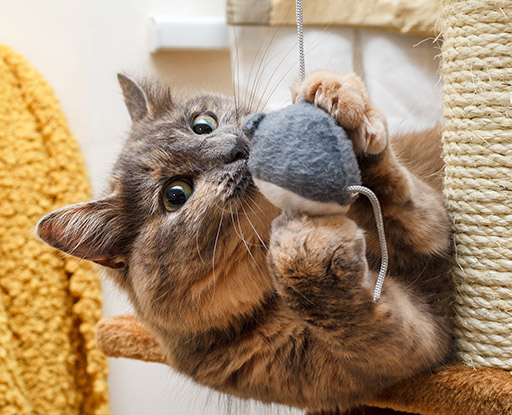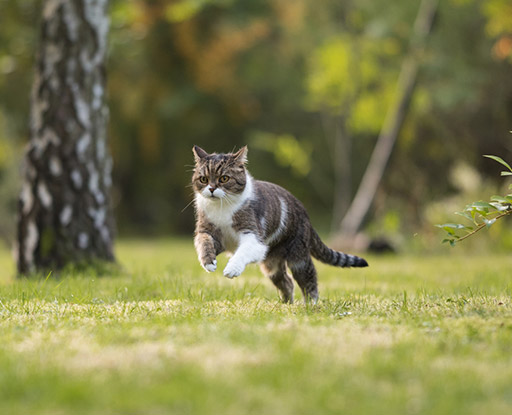Back in the day, cats were rarely kept strictly indoors. They were free to roam the house, the yard and the neighbourhood, jumping over fences, exploring the drains and lazing in the sunshine on the driveway. Over time we’ve learnt that this freedom comes with big risks.Allowing cats free access outside allows them to get into trouble with cars, ticks, snakes and other cats.
These days many vets and animal behaviourists recommend keeping cats indoors  and letting them outside to play in an enclosed structure to keep them safe. Unlike dogs, cats can’t be restrained by fences. The most common cat injuries we see as vets are from cat fights. Luckily, our domestic feline friends can be perfectly happy indoors with appropriate environmental enrichment. As a cat owner, make sure there are plenty of suitable climbing options and scratching posts, and try using food dispensing toys such as treat balls to keep them stimulated.
and letting them outside to play in an enclosed structure to keep them safe. Unlike dogs, cats can’t be restrained by fences. The most common cat injuries we see as vets are from cat fights. Luckily, our domestic feline friends can be perfectly happy indoors with appropriate environmental enrichment. As a cat owner, make sure there are plenty of suitable climbing options and scratching posts, and try using food dispensing toys such as treat balls to keep them stimulated.
While many cats are perfectly happy to rule their indoor kingdoms, they will also benefit from having time outside. Not only is it good for their physical health, but it also helps keep them stimulated and happy. Building an outdoor enclosure that allows your cat to safely enjoy the garden and stops them from venturing away from your house is an excellent option. While there are plenty of luxury versions on the market that can set you back hundreds of dollars, there are also much more affordable options. If you’re handy with the tools, you can even build one yourself with some timber and chicken wire. It doesn’t have to be fancy, just large enough to give your cat enough room to jump, climb and scurry about. If you do opt for a larger enclosure, you can even plonk a chair in the corner so you can sit with your cat while it enjoys the great outdoors.

Taking your cat for a walk on a lead is another way to give them some exercise and safe outdoor time. It won’t suit all cats, and in general the RSPCA doesn’t recommend it, so you’ll need to carefully monitor if your cat is enjoying walking on a lead and being outside or if it finds all the unfamiliar sights, sounds and smells too scary and uncomfortable.
If you do decide to walk your cat on a lead, it’s best to start teaching them as a kitten. Always use a harness instead of a collar, as cats can slip out of
these and escape or become easily entangled. Training a cat to walk on a lead is very different to training a dog. They won’t respond to commands such as “sit” or “drop” so you’ll need to follow them around a little more and let them set the pace. It’s best to start their training inside using toys and treats to create a fun and positive experience and help them understand what you’re trying to do. Once they’re comfortable walking inside, you can gradually move outside into the yard and eventually along the street as long as all their routine vaccinations are up to date.
Just remember, walking cats on leads is still relatively new so you’re bound to be stopped or eyeballed by anyone passing by. It’s a great conversation starter, so you might even make some new friends in the neighbourhood while you’re at it.
Happy walking!

